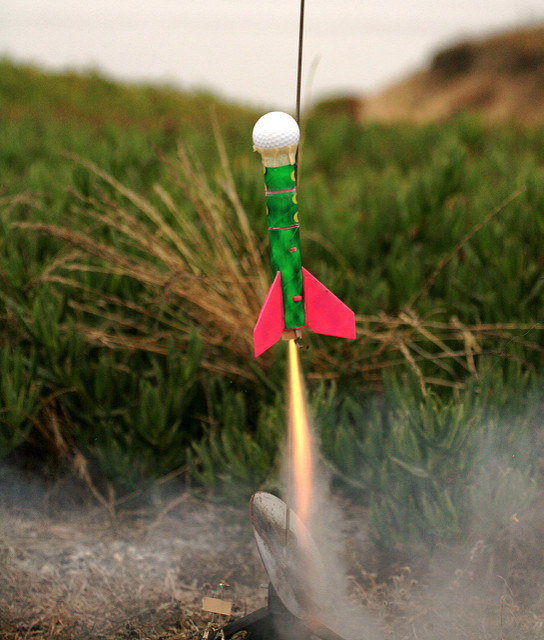Creating the Causes and Conditions for Self Growth – once a week for the last eight years.
 With this blog post, I’ve written a blog post every Wednesday night for eight years, with no misses and no repeats.
With this blog post, I’ve written a blog post every Wednesday night for eight years, with no misses and no repeats.
It started while on vacation at a friend’s house where he suggested I write a blog. I had no idea what a blog was or how to write one. I didn’t know that a blog usually sits on a website and I didn’t know how to make a website or even how to pay someone to make one. And once I stopped hiding behind the transactional work, I realized I didn’t know what to write about or how to start.
Right out of the gate I learned that starting is difficult. I was anxious and afraid and I told myself all sorts of scary stories that didn’t come true. As I pushed through the basics of creating a website, there were plenty of opportunities to stop, but I didn’t. There was a force pushing me, and though I didn’t know where it came from I was happy when it woke up with me every morning and stayed by my side.
Before starting I had no website and then I had one. I moved from no to yes. Creating something from nothing feels great when you’re done, but not beforehand. But I wasn’t even done starting.
The first time I faced the blank screen I was paralyzed. I had many ideas and none of them good enough. I wrote and rewrote paragraphs and scrapped them. I wrote whole drafts and scrapped them. I didn’t have the confidence to say what I wanted to say and let people judge my work. What would they say about me? Would they think about me? Do my words make sense? Are they interesting? Are they right?
At some point I got too tired, my resistance weakened and I hit the publish button. I was still afraid, but in a moment of weakness I sent it anyway. Though I catastrophized before sending, nothing bad happened when I sent it. Nothing good happened either, and I was fine with both.
Self-judgment is a powerful blocking mechanism, but I broke through for the first time. Now, going on 416 times, I’ve started with a blank screen, pushed through my self-judgment and wrote a post. It’s easier now, but it’s still not easy. And it won’t be easy next year. In fact, what I learned is the posts that caused the most uneasiness in me made the largest impact on others. I learned if I put my deepest personal thoughts into my writing, others appreciated it. But more importantly, I stood three inches taller after writing it.
With my posts, every week I must to create something from nothing. Every week I must think deeply, distill and write clearly. At the end of every post, I know more about the subject I wrote about. In that way, I can be my own teacher. And every week I must push through my self-doubt and publish. And in that way, every week I create the causes and conditions for self-growth.
Everything gets better with practice. And my practice of starting with nothing and ending with something has helped me be more effective in domains of high uncertainty. I still feel anxious, but I know it won’t hurt me. And now I use my anxiety for good – as a leading indication that I’m working in new design space. And when I don’t feel anxious, I know to stop what I’m doing and work on something else.
Image credit – Steve Jurvetson
Leadership isn’t binary, and that’s why judgement is important.
 100% of the people won’t like your new idea, even if it’s a really good one like the airplane, mayonnaise or air conditioning.
100% of the people won’t like your new idea, even if it’s a really good one like the airplane, mayonnaise or air conditioning.
I don’t know the right amount of conflict, but I know it’s not 0% or 100%.
If 100% is good, 110% isn’t better. Percentages don’t work that way.
100% alignment is not the best thing. Great things aren’t built on the back of consensus.
100% of the problems shouldn’t be solved. Sometimes it’s best to let the problem blossom into something that cannot be dismissed, denied or avoided.
Fitting in can be good, but not 100% of the time. Sometimes the people in power need to hear the truth, even if you know they’ll choke on it.
If the system is in the way, work the rule. Follow it 100%, follow it to the letter, follow it until it’s absurd. But, keep in mind the system isn’t in the way 100% of the time.
Following the process 100% eliminates intellectual diversity. And, as Darwin said, that leads to extinction. I think he was onto something.
Trying to fix 100% of the problems leads to dilution. Solve one at a time until you’re done.
The best tool isn’t best 100% of the time. Here’s a rule: If the work’s new, try a new tool. You can’t cut a board with a hammer.
I don’t know how frequently to make mistakes, but I know it’s not 0% or 100% of the time.
As a sport, leadership isn’t binary. That’s why we’re paid to use our good judgement.
Image credit – Joe Dyer
If you’re not learning, what are you doing?
 You can’t learn until you acknowledge you don’t understand.
You can’t learn until you acknowledge you don’t understand.
No one knows everything. No sense pretending, especially if you want to learn.
If you don’t know what you want to learn, any learning will do.
If you’re not surprised, the learning could have been deeper.
When you learn it won’t work it’s not failure, it’s learning.
When assumptions are formalized, it’s possible to learn they’re wrong.
Hypotheses are for the laboratory and learning objectives are for everywhere else.
Where learning is useful, relearning is wasteful.
When is it best to learn it won’t work? Then why do wait so long to learn it?
Last year’s learning is out of fashion and it’s time to freshen up your wardrobe.
If you’re surprised, congratulations.
Where doing is activity, learning is progress.
When you’re an expert, you’ve got to learn to unlearn.
Learning quickly is good, but learning the right thing is better.
The best thing to learn is how to learn.
Image credit – NASA Goddard Space Flight Center
Wisdom Within Dichotomy
 To create future success, you’ve got to outlaw the very thing responsible for your past success.
To create future success, you’ve got to outlaw the very thing responsible for your past success.
Sometimes slower is faster and sometimes slower is slower. But it’s always a judgement call.
We bite the bullet and run expensive experiments because they’re valuable, but we neglect to run the least expensive thought experiments because they’re too disruptive.
There’s an infinite difference between the impossible and the almost impossible. And the people that can tell the difference are infinitely important.
If you know how to do it, so does your competition. Do something else.
We want differentiation, but we can’t let go of the sameness of success.
People that make serious progress take themselves lightly.
If you can predict when the project will finish, you can also predict customers won’t be excited when you do.
If you don’t have time to work on something, you can still work on it a little a time.
Perfection is good, but starting is better.
Sometimes it’s time to think and sometimes it’s time to do. And it’s easy to decide because doing starts with thinking.
When your plate is full and someone slops on a new project, there may be a new project on your plate but there’s also another project newly flopped on the floor.
New leaders demand activity and seasoned professionals make progress.
Sometimes it’s not ready, but most of the time it’s ready enough.
There’s no partial credit for almost done. That’s why pros don’t start a project until they finish one.
In this age of efficiency, effectiveness is far more important.
Image credit — Silentmind8
The Three Rs of Innovation – Risk, Reward, and Resources
 Is it innovation or continuous improvement or is it innovation? Is it regular innovation or disruptive innovation? Is it new enough or too new? These questions are worse than meaningless as they suck emotional energy from the organization and divert emotional energy from the business objective.
Is it innovation or continuous improvement or is it innovation? Is it regular innovation or disruptive innovation? Is it new enough or too new? These questions are worse than meaningless as they suck emotional energy from the organization and divert emotional energy from the business objective.
With every initiative, there are risks, rewards, and resources. Risk generally tracks with newness, reward usually tracks with incremental customer goodness and resources are governed by the work. Risk is about the probability of tackling the newness, reward is about the size of the prize and resources are about how the work is done. There is no best amount of risk as sometimes the right amount is none and other times it’s more than everyone prefers. And there’s no best amount of reward as it depends on the company’s goals. And there’s no right amount of resources because there’s no right scope. For all three – risk, reward and resources – the right amount depends on the context.
For bottom line projects, it’s about maintaining product functionality while eliminating waste. And while there’s no right amount of risk, reward and resources, three filters (people, process, tools) can help get everyone on the same page.
Here are the escalating categories for people – no new people, move people from group A to group B, hire more people like the ones we have, hire new people with skills we don’t have. And for categories for process – no new processes, eliminate steps of existing processes, add steps to existing processes, create a process that’s new to the facility, create a process that’s new to the company, create process that’s new to the industry, create a process that’s new to the world. And for tools – no new tools, modify existing tools, buy new tools, create new tools from scratch.
There are no right answers, but if you’ve got to hire people you’ve never hired, create processes that are new-to-world, and invent new tools, it’s clear to everyone the project is pushing the envelope. And if the reward is significant and resources are plentiful, it could be a good way to go. And if there are no new hires, no new processes, and no new tools, don’t expect extravagant rewards. It’s not an exact science, but categorizing the newness in people, process, and tools and then comparing with the reward (payoff) makes clear any mismatches. And when mismatches are clear they can be managed. Resources can be added, the scope can be reduced and reward can be revisited.
For top line projects, it’s about providing novel usefulness to customers at a reasonable cost. And while risk, reward, and resources must be balanced, the filters are different. For top line, the filters are breadth of applicability, competition, is/isn’t.
Here are the escalating categories for breadth of applicability – same customer in the same application, same customers in a new application, new customers in a new market, new customers in different industry, new customers in an industry created by the project. For competition – many competitors in the same industry, fewer competitors in the same industry, fewer competitors in a different industry, no competitors (compete with no one.) And for is/isn’t – improve what is, radically improve what is, create what isn’t.
Again, no right answers. But the plan is to sell to the same customers into markets with the same powerful competitors with only a slight improvement to the existing product, don’t expect radical rewards and don’t run a project that consumes significant resources. And, if the plan is to create a whole new industry where there are no competitors and it requires an entirely new service that doesn’t yet exist, the potential reward should be spectacular, expect to allocate a boatload of resources and prepare for the project to take longer than expected or to be cancelled before completion.
Balancing risk, reward and resources is not an exact science. And the only way to get good at it is to calibrate new projects based on previous projects. To start the calibration process, try the process on your most recent completed projects. Categorize the projects with the relevant filters and define the resources consumed and the realized rewards. And when planning the next project, categorize with the filters and define the resource plan and planned rewards and see how they compare with the completed projects. And if there are mismatches, reconcile them with the realities of the previous projects.
Image credit – Ian Sane
Innovate like a professional with the Discovery Burst Event.
 Recreational athletes train because they enjoy the activity and they compete so they can tell themselves (and their friends) stories about the race. Their training routines are discretionary and their finish times are all about bragging rights. Professional athletes train because it’s their job. Their training is unpleasant, stressful and ritualistic. And it’s not optional. And their performance defines their livelihood. A slow finish time negatively impacts their career. With innovation, you have a choice – do you want to do it like a recreational athlete or like a professional? Do you want to do it like it’s discretionary or like your livelihood depends on it?
Recreational athletes train because they enjoy the activity and they compete so they can tell themselves (and their friends) stories about the race. Their training routines are discretionary and their finish times are all about bragging rights. Professional athletes train because it’s their job. Their training is unpleasant, stressful and ritualistic. And it’s not optional. And their performance defines their livelihood. A slow finish time negatively impacts their career. With innovation, you have a choice – do you want to do it like a recreational athlete or like a professional? Do you want to do it like it’s discretionary or like your livelihood depends on it?
Like with the professional athlete, with innovation what worked last time is no longer good enough. Innovation demands we perform outside our comfort zone.
Goals/Objectives are the key to performing out of our comfort zone. And to bust through intellectual inertia, one of the most common business objectives is a goal to grow revenue. “Grow the top line” is the motto of the professional innovator.
To deliver on performance goals, coaches give Strategic Guidance to the professional athlete, and it’s the same for company leaders – it’s their responsibility to guide the innovation approach. The innovation teams must know if their work should focus on a new business model, a new service or a new product. And to increase the bang for the buck, an Industry-First approach is recommended, where creation of new customer value is focused within a single industry. This narrows the scope and tightens up the work. The idea is to solve a problem for an industry and sell to the whole of it. And to tighten things more, a Flagship Customer is defined with whom a direct partnership can be developed. Two attributes of a Flagship Customer – big enough to create significant sales growth and powerful enough to pull the industry in its wake.
It’s the responsibility of the sales team to identify the Flagship Customer and broker the first meeting. At the meeting, a Customer-Forward approach is proposed, where a diverse team visits the customer and dives into the details of their Goals/Objectives, their work and their problems. The objective is to discover new customer outcomes and create a plan to satisfy them. The Discovery Burst Event (DBE) is the mechanism to do the work It’s a week-long event where marketing, sales, engineering, manufacturing and technical services perform structured interviews to get to the root of the customer’s problems AND, in a Go-To-The-Work way, walk their processes and use their eyeballs to discover solutions to problems the customer didn’t know they had. The DBE culminates with a report out to leaders of the Flagship Company where new customer outcome statements are defined along with a plan to assess the opportunities (impact/effort) and come back with proposals to satisfy the most important outcome statements.
After the DBE, the team returns home and evaluates and prioritizes the opportunities. As soon as possible, the prioritization decisions are presented to the Flagship Customer along with project plans to create novel solutions. In a tactical sense, there are new opportunities to sell existing products and services. And in a strategic sense, there are opportunities to create new business models, new services and new products to reinvent the industry.
In the short term, sales of existing products increase radically. And in the longer term, where new solutions must be created, the Innovation Burst Event (IBE) process is used to quickly create new concepts and review them with the customer in a timely way. And because the new concepts solve validated customer problems, by definition the new concepts will be valued by the customer. In a Customer-Forward way, the new concepts created by the IBE are driven by the customer’s business objectives and their problems.
This Full Circle approach to innovation pushes everyone out of their comfort zones to help them become professional innovators. Company leadership must stick out their necks and give strategic guidance, sales teams must move to a trusted advisor role, engineering and marketing teams must learn to listen to (and value) the customer’s perspective, and new ways of working – the Discovery Burst Event (DBE) and Innovation Burst Event (IBE) – must be embraced. But that’s what it takes to become professional innovators.
Innovation isn’t a recreational sport, and it’s time to behave that way.
Image credit – Lwp Kommunikáció
Complaining isn’t a strategy.
 It’s easy to complain about how things are going, especially when they’re not going well. But even with the best intentions, complaining doesn’t move the organization in a new direction. Sometimes people complain to attract attention to an important issue. Sometimes it’s out of frustration, sometimes out of sadness and sometimes out of fear, but it’s never the best mechanism.
It’s easy to complain about how things are going, especially when they’re not going well. But even with the best intentions, complaining doesn’t move the organization in a new direction. Sometimes people complain to attract attention to an important issue. Sometimes it’s out of frustration, sometimes out of sadness and sometimes out of fear, but it’s never the best mechanism.
If the intention is to convey importance, why not convey the importance by explaining why it’s important? Why not strip the issue of its charge and use an approach and language that help people understand why it’s important? It’s a simple shift from complaining to explaining, but it can make all the difference. Where complaining distracts, explaining brings people together. And if it’s truly important, why not take the time to have a give-and-take conversation and listen to what others have to say? Instead of listening to respond, why not listen to understand?
If you’re not willing to understand someone else’s position it’s not a conversation.
And if you’re on the receiving end of a complaint, how can you learn to see it as a sign of importance and not as an attack? As the receiver, why not strip it of its charge and ask questions of clarification? Why not deescalate and move things from complaint to conversation? Understanding is not agreeing, but it still a step forward for everyone.
When two sides are divided, complaining doesn’t help, even if it’s well-intentioned. When two sides are divided and there’s strong emotion, the first step is to take responsibility to deescalate. And once emotions are calmed, the next step is to take responsibility to understand the other side. At this stage, there is no requirement to agree, but there can be no hint of disagreement as it will elevate emotions and set progress back to zero. It’s a slow process, but when the issues are highly charged, it’s the fastest way to come together.
If you’re dissatisfied with the negativity, demonstrate positivity. If you want to come together, take the first step toward the middle. If you want to generate the trust needed to move things forward, take action that builds trust.
If you want things to be different, look inside.
Image credit – Ireen2005
Moving from Static to Dynamic
 At some point, what worked last time won’t work this time. It’s not if the business model will go belly-up, it’s when. There are two choices. We can bury our heads in the sands of the status quo, or we can proactively observe the world in a forward-looking way and continually reorient ourselves as we analyze and synthesize what we see.
At some point, what worked last time won’t work this time. It’s not if the business model will go belly-up, it’s when. There are two choices. We can bury our heads in the sands of the status quo, or we can proactively observe the world in a forward-looking way and continually reorient ourselves as we analyze and synthesize what we see.
The world is dynamic, but we behave like it’s static. We have massive intellectual inertia around what works today. In a rearward-looking way, we want to hold onto today’s mental models and we reject the natural dynamism swirling around us. But the signals are clear. There’s cultural change, political change, climate change and population change. And a lower level, there’s customer change, competition change, technology change, coworker change, family change and personal change. And still, we cling to static mental models and static business models. But how to move from static to dynamic?
Continual observation and scanning is a good place to start. And since things become real when resources are allocated, allocating resources to continually observe and scan sends a strong message. We created this new position because things are changing quickly and we need to be more aware and more open minded to the dynamic nature of our world. Sure, observation should be focused and there should be a good process to decide on focus areas, but that’s not the point. The point is things are changing and we will continually scan for storms brewing just over the horizon. And, yes, there should be tools and templates to record and organize the observations, but the important point is we are actively looking for change in our environment.
Observation has no value unless the observed information is used for orientation in the new normal. For orientation, analysis and synthesis is required across many information sources to develop ways to deal with the unfamiliar and unforeseen. [1] It’s important to have mechanisms to analyze and synthesize, but the value comes when beliefs are revised and mental models are updated. Because the information cuts against history, tradition and culture, to make shift in thinking requires diversity of perspective, empathy and a give-and-take dialog. [1] It’s a nonlinear process that is ironed out as you go. It’s messy and necessary.
It’s risky to embrace a new perspective, but it’s far riskier to hold onto what worked last time.
[1] Osinga, Frans, P.B. Science, Strategy and War, The strategic theory of John Boyd. New York: Routledge, 2007.
image credit – gabe popa
Learn in small batches, rinse and repeat.
 When the work is new, it can’t be defined and managed like work that has been done before.
When the work is new, it can’t be defined and managed like work that has been done before.
Sometimes there’s a tendency to spend months to define the market, the detailed specification and the project timeline and release the package as a tidal wave that floods the organization with new work. Instead, start with a high-level description of the market, a rough specification and the major project milestones, all of which will morph, grow and inform each other as the team learns. Instead of a big batch, think bite-sized installments that build on each other. Think straw-man that gets its flesh as the various organizations define their learning objectives and learn them.
Instead of target customer segments and idealized personas, define how the customers will interact with the new product or service. Use the storyboard format to capture sequence of events (what they do), the questions they ask themselves and how they know they’ve done it right. Make a storyboard for the top three to five most important activities the customers must do. There’s good learning just trying to decide on the top three to five activities, never mind the deep learning that comes when you try to capture real activities of real customers. [Hint – the best people to capture real customer activities are real customers.]
Instead of a detailed list of inputs and outputs, fill in the details of the storyboards. Create close-ups of the user interfaces and label the dials, buttons and screens. When done well, the required inputs and outputs bubble to the surface. And define the customer’s navigation path, as it defines the sequence of things and where the various inputs come to be and the various outputs need to be. What’s nice is learning by iteration can be done quickly since its done in the domain of whiteboards and markers.
Instead of defining everything, just define what’s new and declare everything else is the same as last time.
The specification for the first prototypes is to bring the storyboards to life and to show the prototypes to real customers. Refine and revise based on the learning, and rinse and repeat, as needed.
As the design migrates toward customer value and confidence builds, it’s then time to layer on the details and do a deep dive into the details – specs, test protocols, manufacturing, sales and distribution.
At early stages of innovation work, progress isn’t defined by activity, it’s defined by learning. And it can look like nothing meaningful is happening as there is a lot of thinking and quiet time mixed in with infrequent bursts active activity. But that’s what it takes to answer the big questions of the front end.
When in doubt, answer the big questions at the expense of the details. And to stay on track, revisit and refine the learning objectives. And to improve confidence, show it to real customers.
And rinse and repeat, as needed.
Image credit – Jason Samfield
Preventive Maintenance for People
 A car has a warning light to protect its engine from running too hot, and when the light goes off you pull over immediately and shut it down. You made a big investment in your car, and you want to make sure it runs for a long time. You respect the warning light. And if you’re late to work because your car overheated, everyone understands. They respect the warning light.
A car has a warning light to protect its engine from running too hot, and when the light goes off you pull over immediately and shut it down. You made a big investment in your car, and you want to make sure it runs for a long time. You respect the warning light. And if you’re late to work because your car overheated, everyone understands. They respect the warning light.
What if you had a warning light? What if you wore a sensor that’s wirelessly connected to your phone that measures your pulse or blood pressure, and your phone flashed a warning light when things get too hot? Would it be okay if you shut down immediately and went home? You and your company have made a big investment in you, and you want to make sure you run for a long time. Would you respect the warning light? Would your company respect the warning light? What’s the difference between a warning light for a car and a warning light for a person?
All machines come with an owner’s manual. In the manual, the manufacturer provides clear instructions on how to take care of the product so it runs well. Tighten the bolts every month, clean and inspect the electrical connections every six months and replace the wear parts per the table in the manual. And if you follow the instructions, the machine will run as advertised. But if you don’t follow the maintenance schedule, expect degraded performance or an unplanned breakdown. Everyone knows the machine must be shut down regularly for maintenance, or it won’t run right.
What if you had an owner’s manual, with clear instructions on how to take care of yourself? How about eight hours of sleep, balanced diet, exercise and some fun? And if you follow the instructions, you will run as advertised. But if you don’t, shouldn’t you and your company expect degraded performance and unplanned downtime? Doesn’t everyone know you must shut down regularly for maintenance or you won’t run right?
I want to perform as advertised, so I’m shutting down for vacation.
Image credit – Mark Fischer
To improve innovation, use fewer words.
 Everyone knows innovation is difficult, but there’s no best way to make it easier. And everyone knows there’s plenty of opportunities to make innovation more effective, but, again, there’s no best way. Clearly, there are ways to improve the process, and new tools can help, but the right process improvements depend on the existing process and the specific project. And it’s the same for tools – the next tool depends on the existing toolbox and the new work required by the project. With regard to tools and processes, the right next steps are not universal.
Everyone knows innovation is difficult, but there’s no best way to make it easier. And everyone knows there’s plenty of opportunities to make innovation more effective, but, again, there’s no best way. Clearly, there are ways to improve the process, and new tools can help, but the right process improvements depend on the existing process and the specific project. And it’s the same for tools – the next tool depends on the existing toolbox and the new work required by the project. With regard to tools and processes, the right next steps are not universal.
But with all companies’ innovation processes, there is a common factor – the innovation process is run by people. Regardless of process maturity or completeness, people run the process. And this fundamental cuts across language, geography and company culture. And it cuts across products, services, and business models. Like it or not, innovation is done by people.
At the highest level, innovation converts ideas into something customers value and delivers the value to them for a profit. At the front end, innovation is about ideas, in the middle, it’s about problems and at the back end, it’s about execution. At the front, people have ideas, define them, evaluate them and decide which ones to advance. In the middle, people define the problems and solve them. And at the back end, people define changes to existing business process and run the processes in a new way.
Tools are a specialized infrastructure that helps people run lower-level processes within the innovation framework. At the front, people have ideas about new tools, or how to use them in a new way, define the ideas, evaluate them, and decide which tools to advance. In the middle, people define problems with the tools and solve them. And at the back end, they run the new tools in new ways.
With innovation processes and tools, people choose the best ideas, people solve problems and people implement solutions.
In order to choose the best ideas, people must communicate the ideas to the decision makers in a clear, rich, nuanced way. The better the idea is communicated, the better the decision. But it’s difficult to communicate an idea, even when the idea is not new. For example, try to describe your business model using just words. And it’s more difficult when the idea is new. Try to describe a new (untested) business model using just your words. For me, words are not a good way to communicate new ideas.
Improved communication improves innovation. To improve communication of ideas, use fewer words. Draw a picture, create a cartoon, make a storyboard, or make a video. Let the decision maker ask questions of your visuals and respond with another cartoon, a modified storyboard or a new sketch. Repeat the process until the decision maker stops asking questions. Because communication is improved, the quality of the decision is improved.
Improved problem solving improves innovation. To improve problem-solving, improve problem definition (the understanding of problem definition.) Create a block diagram of the problem – with elements of the system represented by blocks and labeled with nouns, and with actions and information flow represented by arrows labeled with verbs. Or create a sketch of the customer caught in the act of experiencing the problem. Define the problem in time (when it happens) so it can be solved before, during or after. And in all cases, limit yourself to one page. Continue to modify the visuals until there’s a common definition of the problem (the words stop.) When the problem is defined and communicated in this way, the problem solves itself. Problem-solving is seven-eighths problem definition.
Improved execution improves innovation. To improve execution, improve clarity of the definition of success. And again, minimize the words. Draw a picture that defines success using charts or graphs and data. Create the axes and label them (don’t forget the units of measure). Include data from the baseline product (or process) and define the minimum performance criterion in red. And add the sample size (number of tests.) Use one page for each definition of success and sequence them in order of importance. Start with the work that has never been done before. And to go deeper, define the test protocol used to create the data.
For a new business model, the one-page picture could be a process diagram with new blocks for new customers or partners or new arrows for new information flows. There could be time requirements (response time) or throughput requirements (units per month). Or it could be a series of sketches of new deliverables provided by the business model, each with clearly defined criteria to judge success. When communicated clearly to the teams, definitions of success are beacons of light that guide the boats as the tide pulls them through the project or when uncharted rocks suddenly appear to starboard.
Innovation demands communication and communication demands mechanisms. In the domain of uncertainty, words are not the best communicators. Create visual communication mechanisms that distill and converge on a common understanding.
A picture isn’t worth a thousand words, it gets rid of a thousand.
Image credit – Michael Coghlan
 Mike Shipulski
Mike Shipulski